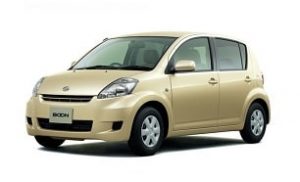Subaru Justy Oil Type
Select Your Model Year...
Choose the appropriate model year for the Subaru Justy you are trying to find the oil type & capacity for from the list below.
Subaru Justy

- Manufacturer: Subaru
- Data Source: Owner's Manual
You can find 5 different trims for the Subaru Justy and their corresponding recommended oil type.
The years available stretch from 1996 through to 2011 and to view the oil type and capacity you just click to expand.
About 70 years ago in the 1950s, a number of Japanese companies joined forces together to form the corporation ‘Fuji Heavy Industries,’ the auto division was named Subaru (a Japanese word meaning ‘unite’).
Subarus went on to be known for its boxer engines (usually above 1500 cc). Having built and engineered aircraft for World War II, Subaru decided to focus its talents on motor cars and the quickly growing market.
The Subaru Justy was a subcompact hatchback built from 1984 up until 1994, spanning just ten years. Designed and developed exclusively in Japan, it was essentially a wide and stretched version of the Rex Kei Car (a car that sold for two decades and ceased production in 1992).
Taking full advantage of how the road tax works in Japan, Subaru ensured the engine size did not exceed 1,000cc for the domestic market, making the Justy a cost effect, attractive option.
Upon its initial release, Subaru had to limit sales to 2,500 units per month due to supply issues surrounding steel bands.
Two roof heights were available depending upon the driver's requirements, and after seeing three years of good demand, Subaru widened the reach to extend to Europe and Northern America.
Called the ‘Subaru Trendy’ in some countries, there were larger engines available, as the need to limit the size was not beneficial in the same way as in its native land.
Subsequently, customers could choose from a 1-liter or 1.2-liter engine and pair this with a four-wheel drive or front-wheel-drive platform.
In some regions, only the four-wheel drive version was available. Speed and acceleration were not synonymous with the Justy, but with its small size, the Justy was perfect for highly populated cities where traffic rarely exceeded 30 miles per hour.
Changing the vehicle aesthetic completely in its later years, the Justy was literally a rebadged second-generation Suzuki Cultus and manufacturing shifted to the Suzuki Esztergom Plant in Hungary.



